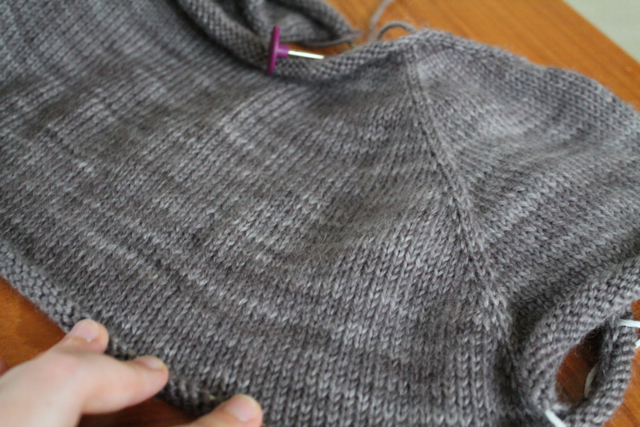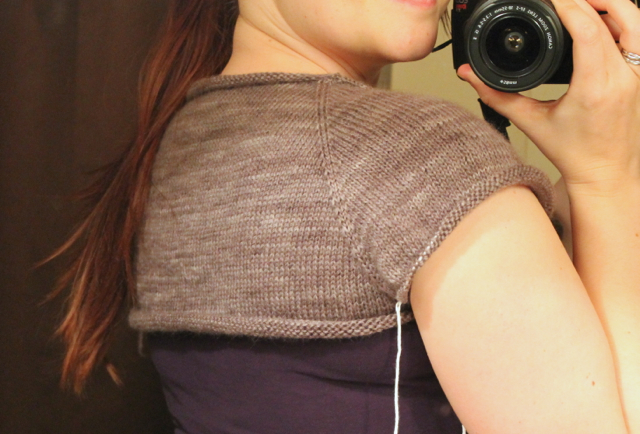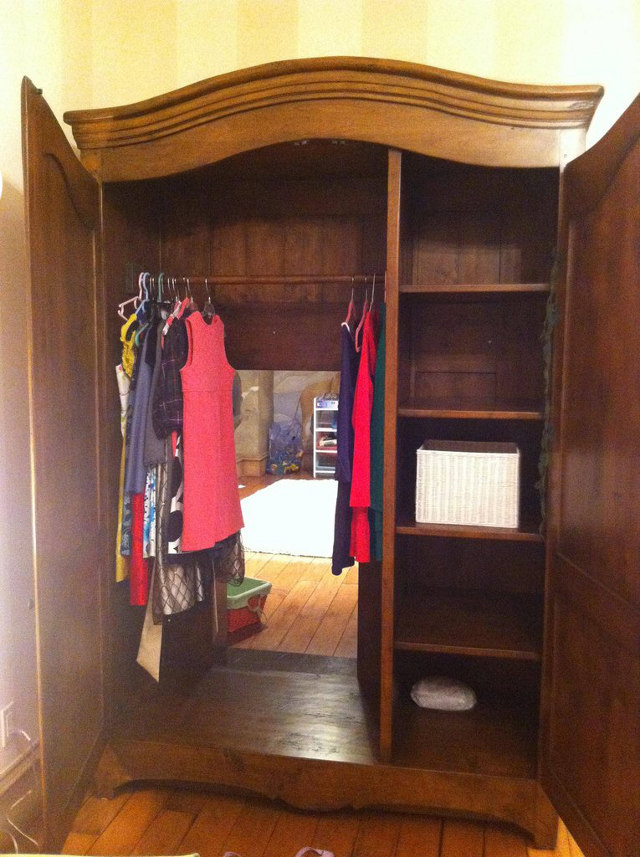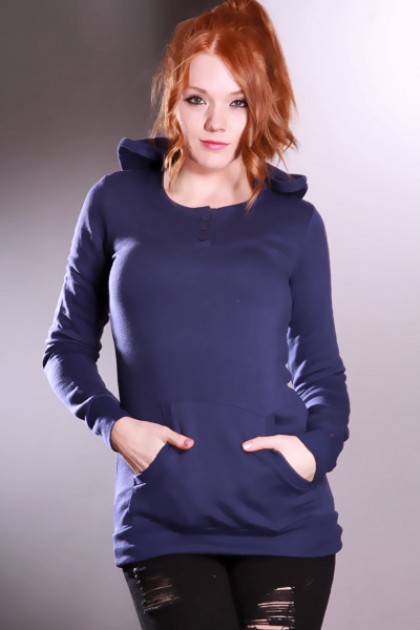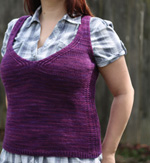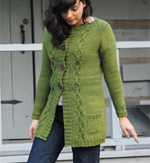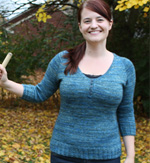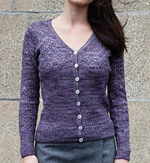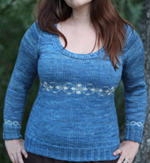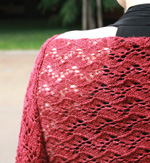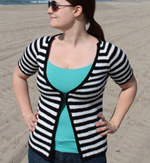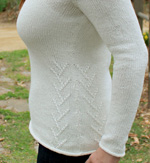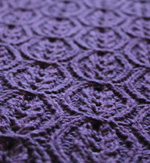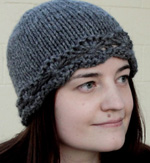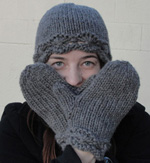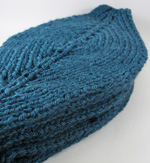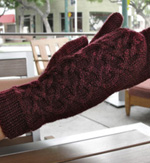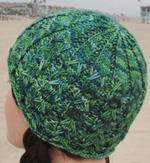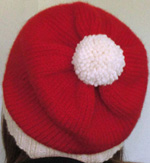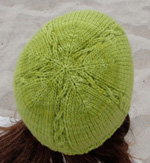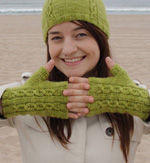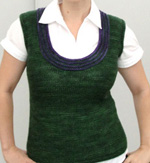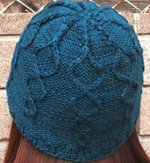Design Process Part 3: The WIP
Earlier posts in this series: Design Process Part 2: Sketching, Swatching and Math ~ Design Process Part 1: Inspiration
The next step in the design process is, of course, to knit the sweater. (Actually, I shouldn’t say “of course”. There are plenty of designers who work out the whole pattern for the sweater, grading and all, before they knit a stitch of the actual sweater. That just doesn’t happen to be my process.)
I’ve been working on it for a few days, and I just split the sleeves off last night:
I’m very pleased with the sweater so far! The only hiccup I experienced was a slight change in row gauge from my swatch to the sweater. In the swatch, I got 8.5 rows to 1 inch, which didn’t change when I blocked it. In the sweater, I’m getting 8 rows/in. Luckily I noticed this in time to realize I’d need to shorten the yoke depth by a few rows. Not a big change–but something I always check now, after being burned by gauge swatches before!
And look, it fits rather well (these pics were taken at about 11:00 last night, so please forgive the messy hair and lack of makeup):
Another reality check I do as the sweater progresses relates to the amount of yarn I’m using. There have definitely been times where I assumed I’d need a certain number of skeins and completely mis-estimated–and that’s much nicer to figure out at the beginning of a sweater, so I have time to order more.
But it looks like I’ll have plenty of yarn. I still have well over half the giant skein left, which should hopefully get me the rest of the way through the body. And if that works, I won’t have to worry about alternating skeins at the changeover point (a real concern when working with handpainted yarn). So bonus!
Design Process Part 1: Inspiration
I got such a nice response to the post about my design process for Lavandula that I thought I’d try an experiment! A new design idea bit me hard a few days ago, so I thought it might be fun to do a series of posts detailing its creation, from first idea to pattern release. (Thanks to the lovely Becky of Sugar Tree Designs for the idea!)
First up: the inspiration.
The initial spark of an idea comes, more often than not, from some hole in my wardrobe.
I’m not doing much dressing up these days, so I’m feeling a lack of casual, comfy, cozy pullovers. You know, the kind you’d wear to curl up in a big chair in front of a fireplace.
So that’s the basic concept out of the way. But what about the details?
I save lots of pictures from catalogs, email mailings, and random internet searches for features I like. I also take pictures of sweaters A LOT. In clothing stores, out walking around, in lines at the grocery store… I know some designers prefer to look at fashion magazines or runway collections, but to me there’s nothing like seeing the way a collar drapes, color does/does not flatter, etc. in person.
I’ve perfected my “take a surreptitious picture with my iPhone, without freaking out the subject” technique.
Every so often, I go through my photos and see if inspiration strikes.
I saved this picture because I liked how far down the v-neck came (very flattering to larger busts):
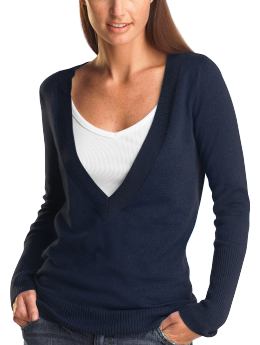 I like the width of the ribbing on this next one (although I’m not really a fan of the lace pattern in the rest of the sweater or the airy-ness of the yarn used, and I don’t think I’d put a v-neck in the back as well as the front):
I like the width of the ribbing on this next one (although I’m not really a fan of the lace pattern in the rest of the sweater or the airy-ness of the yarn used, and I don’t think I’d put a v-neck in the back as well as the front):
 Big, floppy collars just scream cozy to me–plus I like when it looks like there’s a hood from the front, but there’s not all the extra fabric of a full hood, just a rectangle of fabric partway down the back. Actually, I have no idea what to call this. Is it a shawl collar, just without the short-rows? I can’t find a picture of what I’m talking about by searching for shawl collar, so maybe not. Anyone know what its official name is?
Big, floppy collars just scream cozy to me–plus I like when it looks like there’s a hood from the front, but there’s not all the extra fabric of a full hood, just a rectangle of fabric partway down the back. Actually, I have no idea what to call this. Is it a shawl collar, just without the short-rows? I can’t find a picture of what I’m talking about by searching for shawl collar, so maybe not. Anyone know what its official name is?
I also like front pockets, and they’re definitely cozy… but I’m a little iffy on whether I want to include one in this design or not–it’s hard to pull off without making the sweater seem too casual. But I’m putting the decision off until later, when I have a better idea about yarn choices and the overall look of the piece.
With those criteria in mind, I can start brainstorming in earnest. Next step: sketching!

